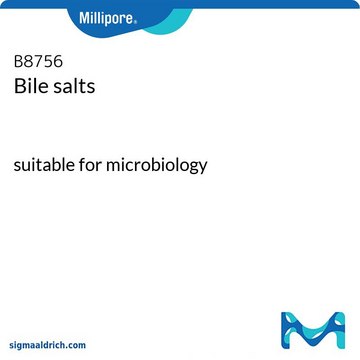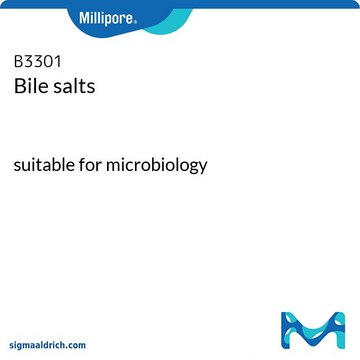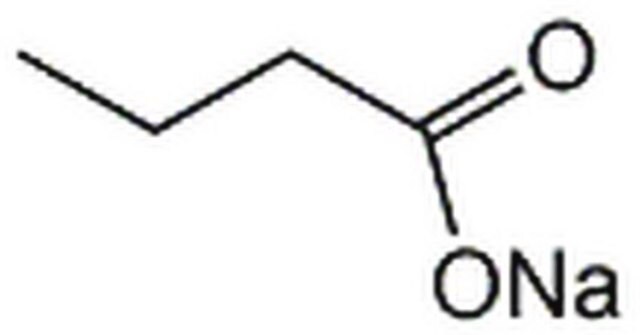Wichtige Dokumente
B5887
Natriumbutyrat
≥98.5% (GC)
Synonym(e):
Buttersäure Natriumsalz
About This Item
Empfohlene Produkte
Biologische Quelle
synthetic (organic)
Qualitätsniveau
Assay
≥98.5% (GC)
Form
powder
Lagerbedingungen
(Tightly closed. Dry.
Keep in a dry place. )
Methode(n)
DNA amplification: suitable
cell based assay: suitable
inhibition assay: suitable
Farbe
white
mp (Schmelzpunkt)
250-253 °C (lit.)
Löslichkeit
water: 100 mg/mL, clear to slightly hazy, colorless
Kationenspuren
Na: 19.8-22.0% (anhydrous)
Eignung
suitable for DNA precipitation
Anwendung(en)
cell analysis
life science and biopharma
lipidomics
Lagertemp.
room temp
SMILES String
[Na+].CCCC([O-])=O
InChI
1S/C4H8O2.Na/c1-2-3-4(5)6;/h2-3H2,1H3,(H,5,6);/q;+1/p-1
InChIKey
MFBOGIVSZKQAPD-UHFFFAOYSA-M
Angaben zum Gen
mouse ... ENSMUSG00000061062(15181)
Suchen Sie nach ähnlichen Produkten? Aufrufen Leitfaden zum Produktvergleich
Anwendung
- Als Komponente in Homogenisierungs- und Immunpräzipitationspuffer für die HDAC-Hemmung in Fliegenembryos und S2-Zellen von Insekten.
- Als Histondeacetylaseinhibitor in der Brustkrebszelllinie MDA-MB-231, analysiert durch Zellviabilitätsassay und viralen Replikationsassay.
- Zum Verbessern der Produktion von rekombinantem gewebespezifischem Plasminogenaktivator (t-PA) in CHO-Zellen (Chinese Hamster Ovary) in einem Bioreaktor.
Biochem./physiol. Wirkung
Vorsicht
Sonstige Hinweise
Ähnliches Produkt
Signalwort
Warning
H-Sätze
Gefahreneinstufungen
Acute Tox. 4 Oral - Eye Irrit. 2 - Skin Irrit. 2
Lagerklassenschlüssel
11 - Combustible Solids
WGK
WGK 1
Flammpunkt (°F)
Not applicable
Flammpunkt (°C)
Not applicable
Persönliche Schutzausrüstung
dust mask type N95 (US), Eyeshields, Gloves
Hier finden Sie alle aktuellen Versionen:
Besitzen Sie dieses Produkt bereits?
In der Dokumentenbibliothek finden Sie die Dokumentation zu den Produkten, die Sie kürzlich erworben haben.
Kunden haben sich ebenfalls angesehen
Artikel
Naive pluripotent stem cells are located within the epiblast of mature blastocysts. These primitive “ground-state” cells may be cultured in vitro using specialized media and small molecule inhibitors.
Epigenetic modifications are thought to occur through two key interconnected processes—DNA methylation and the covalent modification of histones.
Unser Team von Wissenschaftlern verfügt über Erfahrung in allen Forschungsbereichen einschließlich Life Science, Materialwissenschaften, chemischer Synthese, Chromatographie, Analytik und vielen mehr..
Setzen Sie sich mit dem technischen Dienst in Verbindung.










